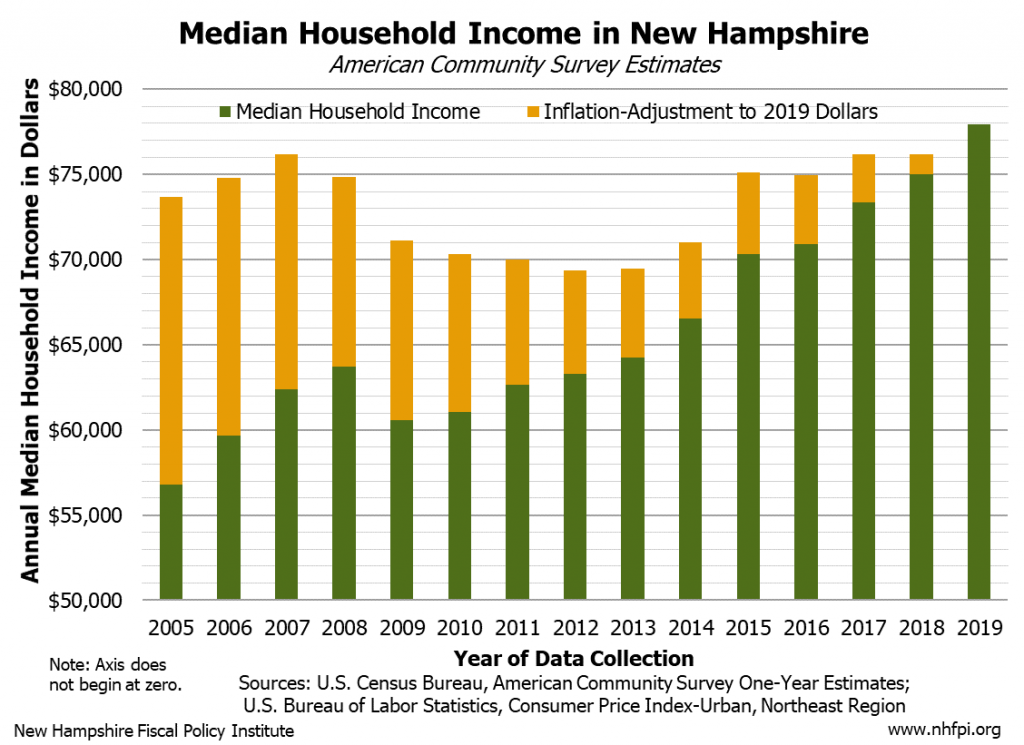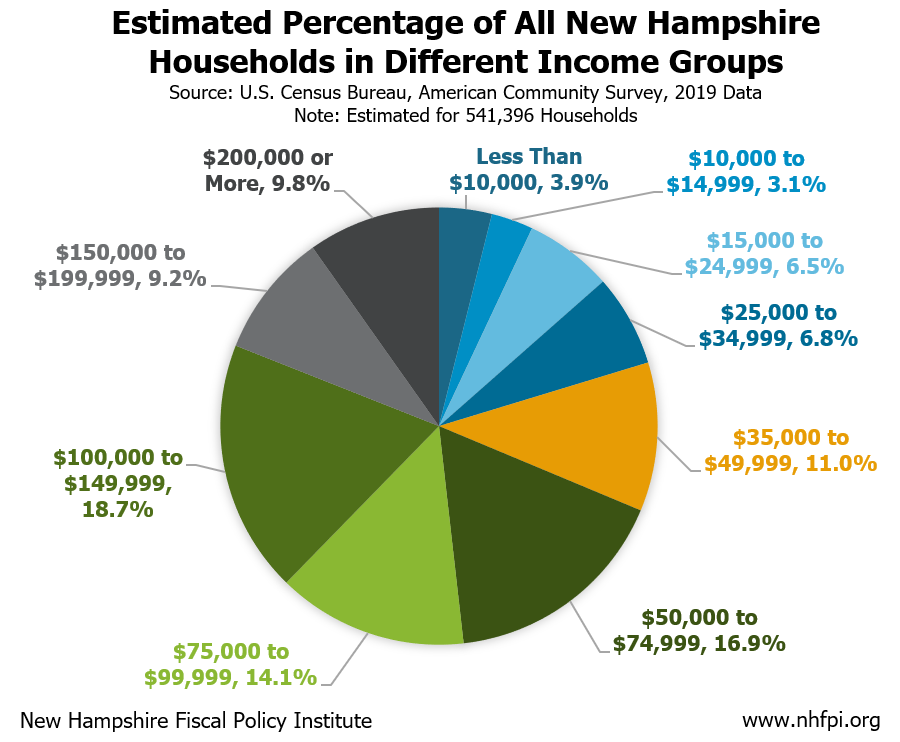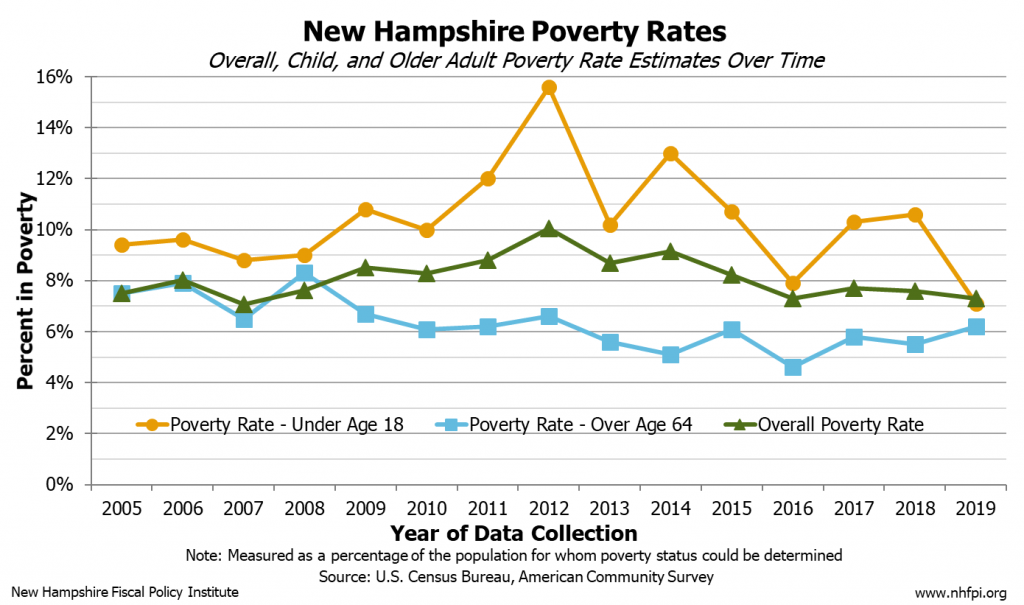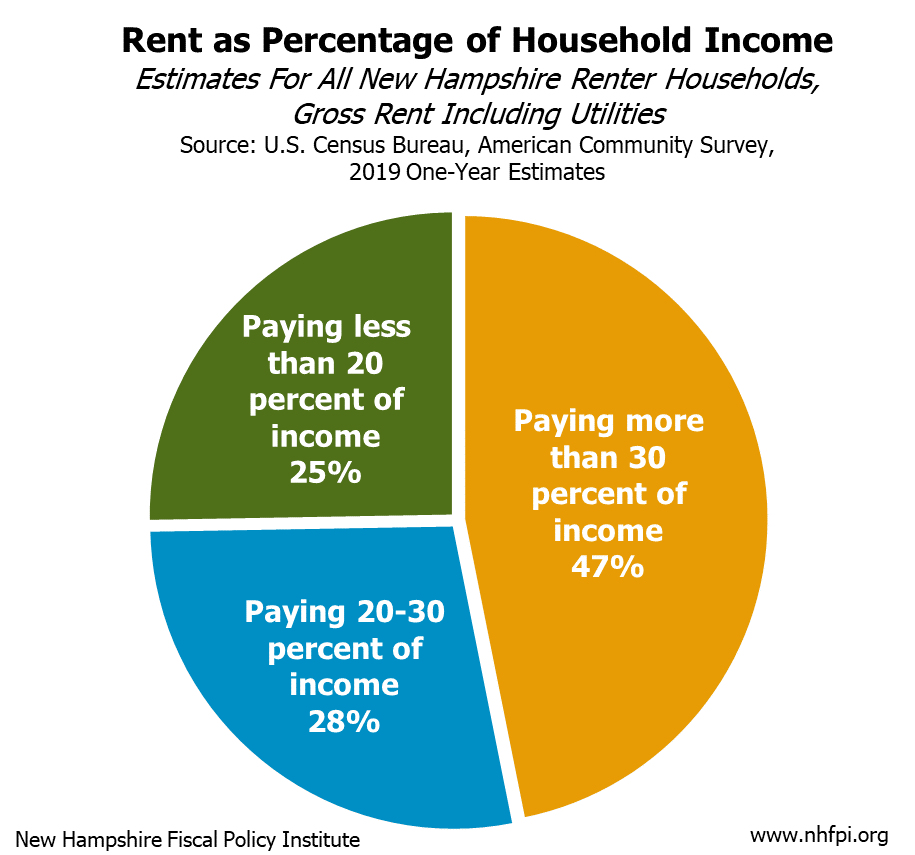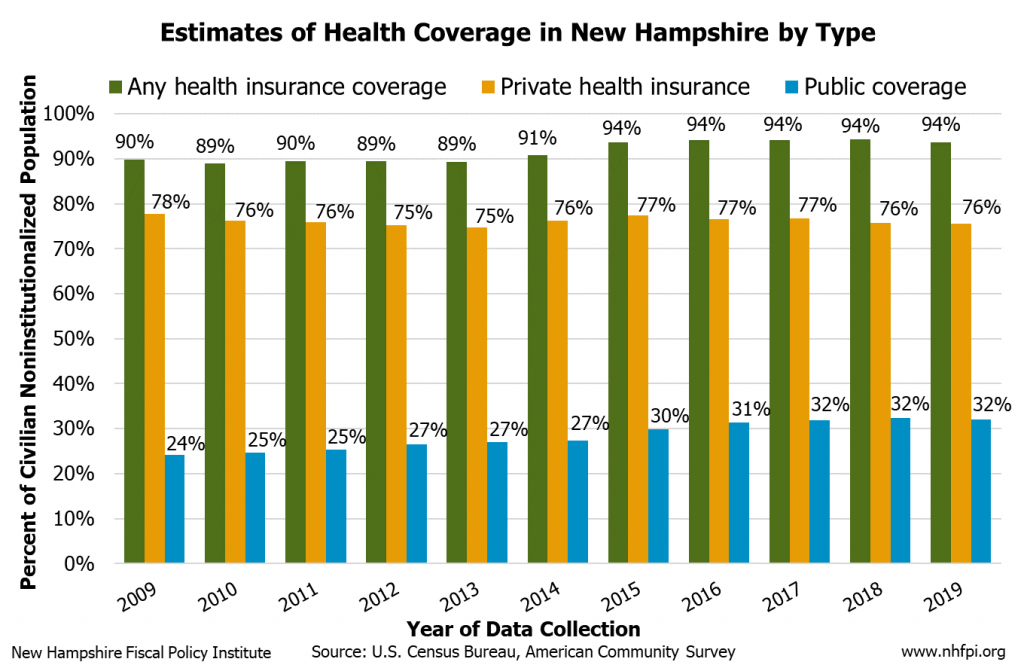The U.S. Census Bureau American Community Survey data released September 17, 2020 provide estimates based on surveys conducted throughout 2019. These data were collected prior to the onset of the COVID-19 crisis, and do not reflect the crisis’s dramatic impact on the wellbeing of Granite Staters. All data are estimates for New Hampshire from the U.S. Census Bureau.
Household Income
Median household income, estimated at $77,933 in the data collected in 2019, increased from the $74,991 estimated using the 2018 data. This figure is the highest recorded. However, adjusting for inflation shows the purchasing power of the median household did not exceed estimated 2007 levels until 2019, the last full year of a long economic recovery. About three in ten Granite State households had less than $50,000 per year in income, and about one in five had less than $35,000 per year. Incomes for households with householders identifying as Hispanic or Latino had lower estimated median household incomes than those with non-Hispanic white householders, and collected data were insufficient to determine household incomes for other racial and ethnic groups with certainty.
Poverty
New Hampshire’s poverty rate remained about the same, with an estimated 7.3 percent in the 2019 data and 7.6 percent in the 2018 data, which are both near to levels from before the previous recession. The poverty rate for those under 18 years old, however, dropped from 10.6 percent to 7.1 percent, a noteworthy decrease given a greater percentage of children typically live in poverty than the population as a whole. The poverty rate for those aged 65 and older was also statistically unchanged, although the point estimate edged up to 6.2 percent for 2019 relative to the 5.5 percent in the 2018 data. The decrease in the child poverty rate while other poverty rates have held relatively steady suggests the economic conditions in 2019 were boosting wages for lower income parents, but older adults with limited means may have not seen their incomes increase. The poverty-level annual income threshold for 2019 is $13,300 for an individual less than 65 years old, and $20,578 for a family of three with one child. New Hampshire’s overall poverty rate was the lowest of any state in the country. About 96,000 Granite Staters lived in poverty, which is approximately equivalent of the estimated 2019 populations of Concord, Laconia, Lebanon, and Portsmouth combined. Around 41,000 people lived at less than half of poverty-level income, while an estimated 248,000 people, or nearly one in five residents, lived at less than twice poverty-level incomes in New Hampshire. The poverty rate for Hispanic or Latino Granite Staters was higher than the statewide rate for all residents.
Housing Costs
For households that are renters, the Census Bureau measures gross rent, including utilities, as a percentage of household income. Gross rent exceeded 30 percent of household income, a common metric for affordability, for about 47 percent of all renter households.
Health Coverage
The percentage of Granite Staters with health coverage dropped to 93.7 percent, statistically unchanged from the 94.3 percent measured in 2018. Approximately 84,000 Granite Staters, or about one in sixteen, lacked health insurance coverage in the 2019 data.

